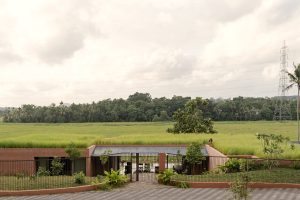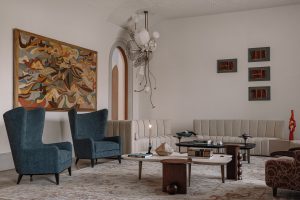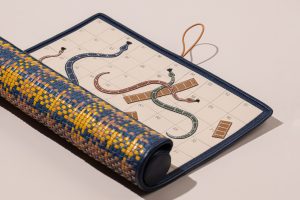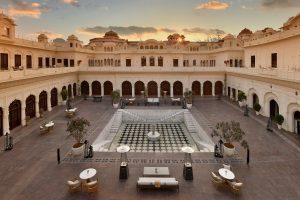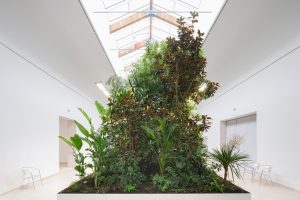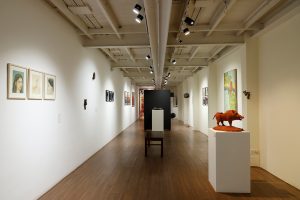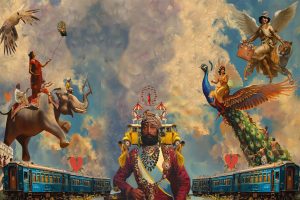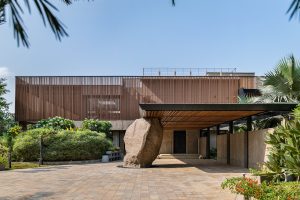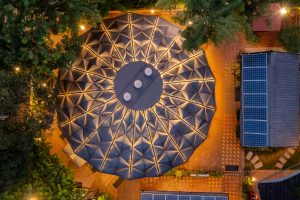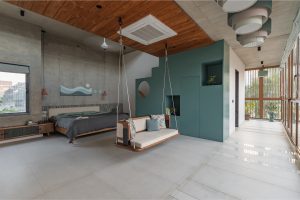A New Sunken Museum At Humayun’s Tomb, Delhi Narrates Tales Of The Bygone
The iconic 16th-century Humayun’s Tomb Complex, which has been meticulously conserved for 25 years, now features a new sunken museum. This museum displays 700 artefacts that trace the history, events, and timelines related to the complex through its exhibits.
- 6 Sep '24
- 5:02 pm by Simran Almeida
In Delhi’s Nizamuddin area, a wall is etched with Sufi singer Amir Khusrau’s quote— ‘If there’s a paradise on earth, it’s here, it’s here, it’s here.’ Originally a homage to old Delhi’s regal charm, this quote now perfectly encapsulates the essence of the new, sunken museum at the Humayun’s Tomb Complex, inaugurated on 29th July. During the inaugural ceremony, Prince Rahim Aga Khan remarked, “Museums and historic landmarks preserve and reveal the story of humanity”. He further added, “Inherently, they are places that foster connections among people as we delve into our collective, intricate past, and consider how we can collaboratively shape a united and better future.” With a 25-year-old conservation history, steered by the Aga Khan Trust for Culture (AKTC) in partnership with the Archaeological Survey of India (ASI) Humayun’s Tomb Museum is the latest contemporary addition to the Humayun’s Tomb-Sunder Nursery-Nizamuddin Basti conservation project.
Also Read: Tracing The Glorious History Of Art Deco In Bombay With Walkitecture
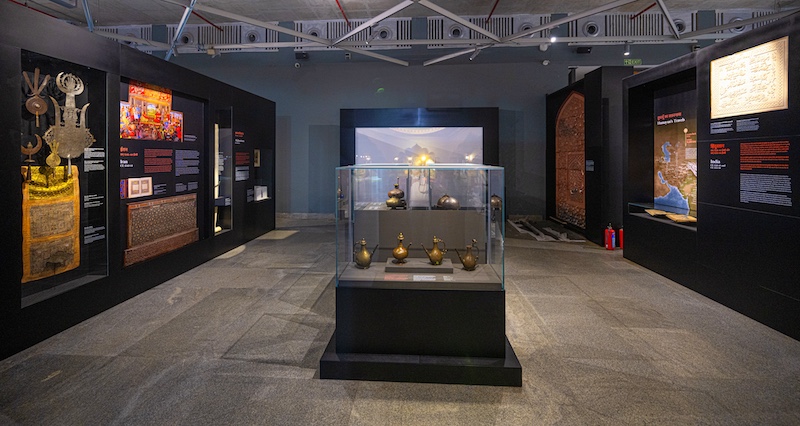
Corralled by 14th-century heritage buildings, this site embarks on a historical odyssey, adhering to UNESCO’s design caveats. The museum displays 500 relics, tracing Humayun’s life and his ardour for astronomy and astrology. The complex includes the Blue Dome of Sabz Burj—now deciphered as his mother’s mausoleum —along with adjacent Sunder Nursery and other historic sites. These were collectively listed as a World Heritage Site in 2016. When the nursery opened in 2018, it offered a premise for three million visitors per year to decipher the shrouded tales tucked in the monuments’ slender crevices.
Unravelling The Narratives
Spanning five galleries to establish a connection with the nursery, this underground museum references the architecture of step-wells and baolis, descending about six metres below. The museum rises four feet above the ground, hiding in plain sight beneath a lush Mughal-era Garden containing a 100-seat auditorium, temporary galleries, café spaces, meeting rooms, and a library. The susurrus from the seven centuries of Nizamuddin’s rich culture, blended with ingenious contemporary architecture, springs the roots for the museum. Cruising through the galleries during the inaugural ceremony, Gajendra Singh Shekhawat, Honourable Minister of Tourism and Culture, remarked, “These artefacts relate stories associated with the World Heritage Site and will enable an enhanced understanding.”
Featuring an inclusive design layout, a spacious ramp escorts visitors to The Vestibule Gallery saturated with artefacts, graphic panels, and architectural models, tracing the journey to Purana Qila. Upon entering, a scaled architectural installation of the mausoleum marks the gallery’s exact location, offering the ironic experience of watching the ‘structure from within the structure’. This is tailed by a cluster of galleries featuring an immersive installation of the emperor’s 34,000 km travels, a display of Delhi’s 2,500-year history, and a panoramic screen depicting the charm of the Nizamuddin Area. After a virtual excursion through the monuments and gardens of the World Heritage Site, one can escape to the first principal gallery, ‘Where the Emperor Rests’. It is dedicated to the emperor’s patronage of books, art, travel and the architecture of his mausoleum, along with relics later incorporated into the narrative. Luis Monreal, General Manager of AKTC elucidated, “Possibly no other museum in the world uses such a variety of means to tell a story to the public.”
Also Read: The Complex History Of Chandigarh Chairs
A Reminiscing Folklore
The greater Nizamuddin area, ascertained as one of the earliest Mughal cities, witnessed visits from 18 Mughal Emperors—who bequeathed the Dargahs and constructed the heritage structures that are still a part of the area and the Humyun’s Tomb complex. As one strolls through the museum, a rich chronicle of the period’s antique charm is evident, through miniature paintings, films, and architectural exhibits, along with stone and brass heirlooms. A black backdrop underscores the era’s rich craftsmanship, with metallic accents and intricate details lining the aisle, while glass shelves containing ornate turbans, brass kitchenware and armours, vividly narrate the shrouded customs of the bygone era.
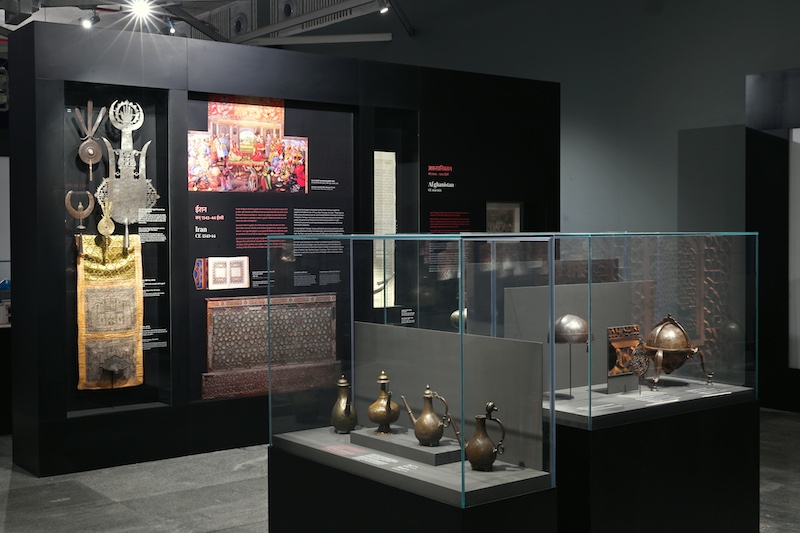
The associated galleries further orchestrate a concert of relics from over 122 cities, including daggers from the Iranian Shah Tahmasp and a series of sacred texts etched on stone and paper. Flanking the dagger collections, an 18-foot restored finial corralled by glass railing stands against a striking blue becoming the gallery’s crowned jewel. The cobalt backdrop also features ornately carved stone Dargah enclosures—reminiscent of the masters of trade—artisans.
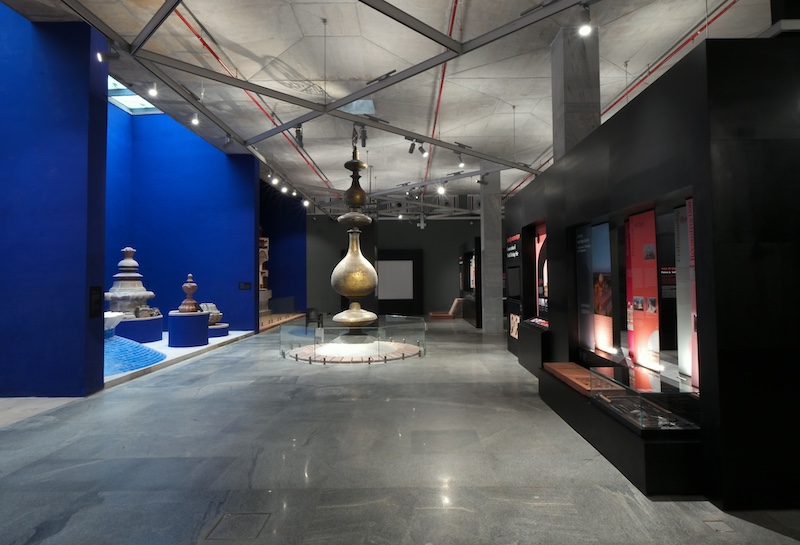
A deep reverence for Sufism piloted the conception of the ‘Icons of a Sacred Landscape’ gallery, which features coins minted under the Mughal emperors’ decree and the last Mughal emperor—Bahadur Shah ‘Zafar’s throne. The gallery also underscores four key cultural characters—14th century Sufi saint Hazrat Nizamuddin Auliya, poets Amir Khusrau, Rahim and the Mughal prince Dara Shukoh—through calligraphy, manuscripts, portraits, and sacred texts, narrating their cultural influence from the 13th century onward. These tchotchkes find solace under a 12-foot wooden canopy, handcrafted with mother-of-pearl and enamelled in lacquer, featuring speckles of hues with coloured ceiling patterns engraved in lime mortar.
Also Read: Looking Back At 2022 – Historic Art And Design Moments That Shaped The Year
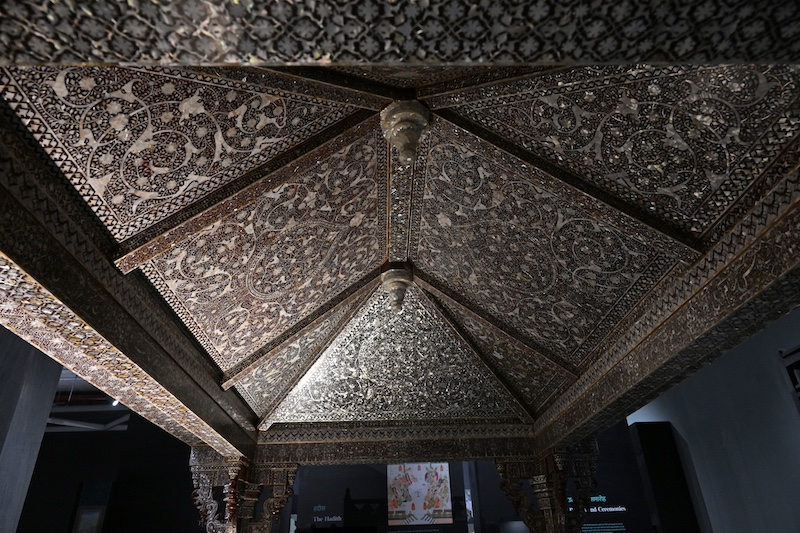
The Nizamuddin area’s 700-year-old rich legacy, tucked beneath the Mughal Garden intertwines, vestiges of Hindustani culture and old Delhi’s ostentatious charm. With relics at its heart and the city in its bones, this museum whispers the intangible heritage of music, poetry, and Sufi practices. It celebrates a sacred landscape encompassing architectural styles and craft traditions of a shared heritage.



